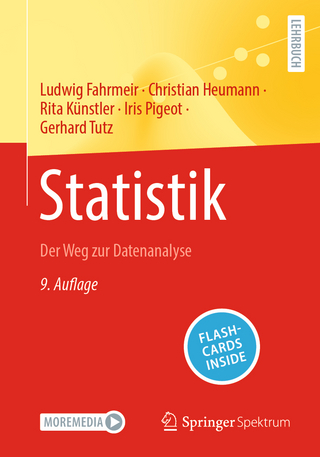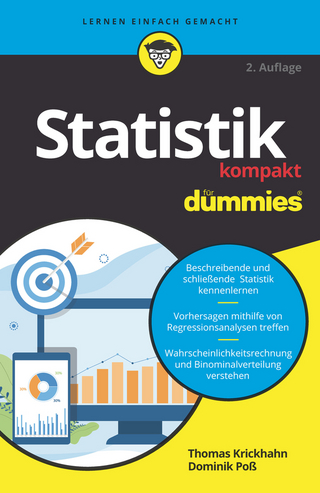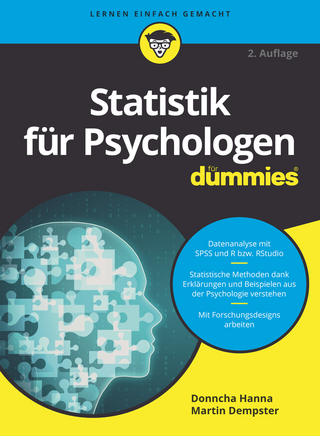
Statistical Methods in Water Resources
Elsevier Science Ltd (Verlag)
978-0-444-88528-9 (ISBN)
- Titel ist leider vergriffen;
keine Neuauflage - Artikel merken
Exercises at the end of each chapter enable the mechanics of the methodological process to be fully understood, with data sets included on diskette for easy use. The result is a book that is both up-to-date and immediately relevant to ongoing work in the environmental and water sciences.
1. Summarizing Data. 1.1. Characteristics of Water Resources Data. 1.2. Measures of Location. 1.3. Measures of Spread. 1.4. Measures of Skewness. 1.5. Other Resistant Measures. 1.6. Outliers. 1.7. Transformations. 2. Graphical Data Analysis. 2.1. Graphical Analysis of Single Data Sets. 2.2. Graphical Comparisons of Two or More Data Sets. 2.3. Scatterplots and Enhancements. 2.4. Graphs for Multivariate Data. 3. Describing Uncertainty. 3.1. Definition of Interval Estimates. 3.2. Interpretation of Interval Estimates. 3.3. Confidence Intervals For The Median. 3.4. Confidence Intervals For The Mean. 3.5. Nonparametric Prediction Intervals. 3.6. Parametric Prediction Intervals. 3.7. Confidence Intervals For Quantiles (Percentiles). 3.8. Other Uses For Confidence Intervals. 4. Hypothesis Tests. 4.1. Classification of Hypothesis Tests. 4.2. Structure of Hypothesis Tests. 4.3. The Rank-Sum Test as an Example of Hypothesis Testing. 4.4. Tests for Normality. 5. Differences Between Two Independent Groups. 5.1. The Rank-Sum Test. 5.2. The t-Test. 5.3. Graphical Presentation of Results. 5.4. Estimating the Magnitude of Differences Between Two Groups. 6. Matched-Pair Tests. 6.1. The Sign Test. 6.2. The Signed-Rank Test. 6.3. The Paired t-Test. 6.4. Consequences of Violating Test Assumptions. 6.5. Graphical Presentation of Results. 6.6. Estimating the Magnitude of Differences Between Two Groups. 7. Comparing Several Independent Groups. 7.1. Tests for Differences Due to One Factor. 7.2. Tests For The Effects of More Than One Factor. 7.3. Blocking - The Extension of Matched-Pair Tests. 7.4. Multiple Comparison Tests. 7.5. Presentation of Results. 8. Correlation. 8.1. Characteristics of Correlation Coefficients. 8.2. Kendall's Tau. 8.3. Spearman's Rho. 8.4. Pearson's r. 9. Simple Linear Regression. 9.1. The Linear Regression Model. 9.2. Computations. 9.3. Building a Good Regression Model. 9.4. Hypothesis Testing in Regression. 9.5. Regression Diagnostics. 9.6. Transformations of the Response (y) Variable. 9.7. Summary Guide to a Good SLR Model. 10. Alternative Methods to Regression. 10.1. Kendall-Theil Robust Line. 10.2. Alternative Parametric Linear Equations. 10.3. Weighted Least Squares. 10.4 Iteratively Weighted Least Squares. 10.5. Smoothing. 11. Multiple Regression. 11.1. Why Use MLR? 11.2. MLR Model. 11.3. Hypothesis Tests for Multiple Regression. 11.4. Confidence Intervals. 11.5. Regression Diagnostics. 11.6. Choosing the Best MLR Model. 11.7. Summary of Model Selection Criteria. 11.8. Analysis of Covariance. 12. Trend Analysis. 12.1. General Structure of Trend Tests. 12.2. Trend Tests With No Exogenous Variable. 12.3. Accounting for Exogenous Variables. 12.4. Dealing With Seasonality. 12.5. Use of Transformations in Trend Studies. 12.6. Monotonic Trend versus Two Sample (Step) Trend. 12.7. Applicability of Trend Tests With Censored Data. 13. Methods for Data Below the Reporting Limit. 13.1. Methods for Estimating Summary Statistics. 13.2.
| Reihe/Serie | Studies in Environmental Science S. ; v. 49 |
|---|---|
| Verlagsort | Oxford |
| Sprache | englisch |
| Themenwelt | Mathematik / Informatik ► Mathematik ► Statistik |
| Medizin / Pharmazie | |
| Naturwissenschaften ► Biologie ► Ökologie / Naturschutz | |
| Naturwissenschaften ► Chemie ► Analytische Chemie | |
| Naturwissenschaften ► Geowissenschaften ► Hydrologie / Ozeanografie | |
| ISBN-10 | 0-444-88528-5 / 0444885285 |
| ISBN-13 | 978-0-444-88528-9 / 9780444885289 |
| Zustand | Neuware |
| Haben Sie eine Frage zum Produkt? |
aus dem Bereich


